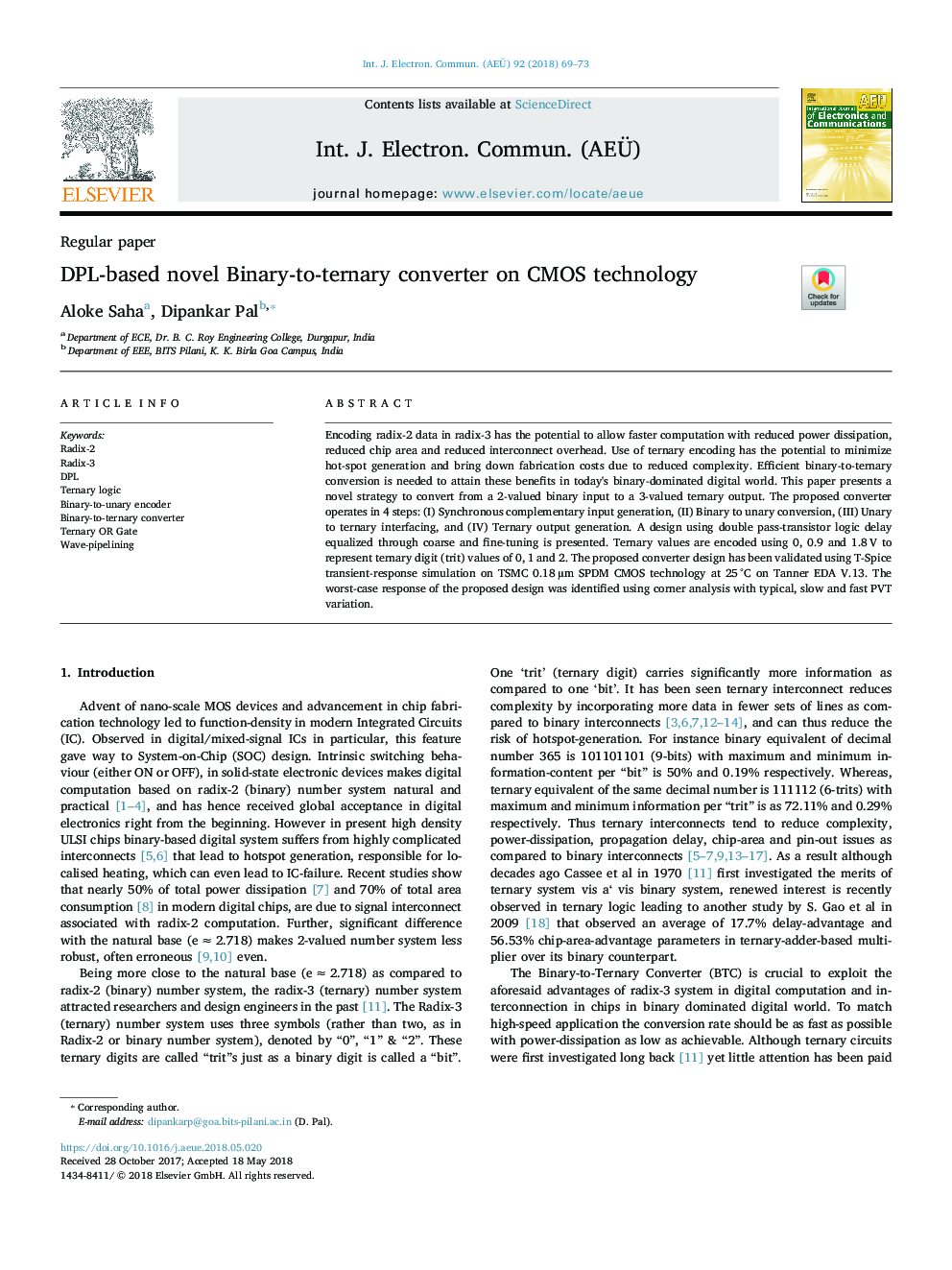| Article ID | Journal | Published Year | Pages | File Type |
|---|---|---|---|---|
| 6879085 | AEU - International Journal of Electronics and Communications | 2018 | 5 Pages |
Abstract
Encoding radix-2 data in radix-3 has the potential to allow faster computation with reduced power dissipation, reduced chip area and reduced interconnect overhead. Use of ternary encoding has the potential to minimize hot-spot generation and bring down fabrication costs due to reduced complexity. Efficient binary-to-ternary conversion is needed to attain these benefits in today's binary-dominated digital world. This paper presents a novel strategy to convert from a 2-valued binary input to a 3-valued ternary output. The proposed converter operates in 4 steps: (I) Synchronous complementary input generation, (II) Binary to unary conversion, (III) Unary to ternary interfacing, and (IV) Ternary output generation. A design using double pass-transistor logic delay equalized through coarse and fine-tuning is presented. Ternary values are encoded using 0, 0.9 and 1.8â¯V to represent ternary digit (trit) values of 0, 1 and 2. The proposed converter design has been validated using T-Spice transient-response simulation on TSMC 0.18â¯Âµm SPDM CMOS technology at 25â¯Â°C on Tanner EDA V.13. The worst-case response of the proposed design was identified using corner analysis with typical, slow and fast PVT variation.
Keywords
Related Topics
Physical Sciences and Engineering
Computer Science
Computer Networks and Communications
Authors
Aloke Saha, Dipankar Pal,
